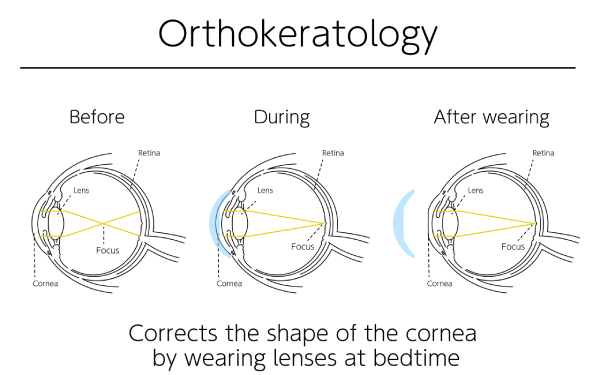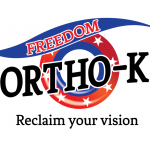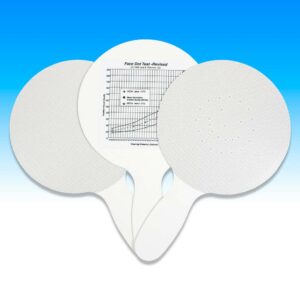
I’m Dr. Destin, and I love Orthokeratology (Ortho-K)! Not only do I have a passion to provide Ortho-K to others, but I have also been blessed to wear these night lenses personally for about 20 years. But even though Ortho-K (AKA Corneal Refractive Therapy CRT) is not new, there are many who have still never heard of it. I hope to change this lack of awareness by sharing the basics that are important to know.
What is Orthokeratology?
Ortho-K is an exciting non-surgical vision treatment that uses specialty contact lenses to reshape the cornea (front clear layer of the eye) while you sleep. This provides clear vision without daytime contact lenses or glasses. And yes, NO Surgery! I just put my night lenses in right before I go to sleep at night and remove them as soon as I get up in the morning. Viola! I have clear vision with them on, and clear vision with them off. I wear them every night to maintain the magic. This is why some orthokerotologists like myself will refer to these specialized lenses as eye retainers or corneal molds.


How can Ortho-K help you?
#1: NO surgery; NO daytime contact lenses; NO glasses. If you’re not impressed yet, then maybe Ortho-K is not for you. I’ve been wearing Ortho-K lenses for decades, and I still think it’s pretty awesome. What’s even better is that Ortho-K is FDA approved for any age. So, no you don’t have to be a kid to do Ortho-K, but the next reason mainly helps children.
#2: Orthokeratology is one of the best ways with the least side effects to slow down the terrible progression of nearsightedness we are seeing across the world1. In my clinical experience as an optometrist, I often see glasses prescriptions for young people getting worse each year. I’m so glad that we have good treatments to help slow this trend–a definite plus for Ortho-K.
How does Ortho-K help Humanity?
So, Ortho-K can help you by providing clear vision without daytime contacts or glasses and slow the progression of nearsightedness. Neither of those feats are insignificant. But Ortho-K also helps the world as a whole. You see, people who are
substantially nearsighted have much higher risks of other eye complications later in life2. Complications such as retina detachment, myopic macular degeneration, and glaucoma can cause blindness. Myopia (nearsightedness) is not just blurry distance vision. We are seeing a marked increase in the number of people becoming nearsighted3 4 and the magnitude of nearsightedness across the world. So, every person who participates in Ortho-K is one more person much less likely to have nearsightedness at the level high enough to cause such potentially blinding complications. Ortho-K is good for you and good for the world.

Who can help?
Whether you are a child with a “runaway” glasses prescription or an adult interested in a non-surgical alternative to LASIK, Ortho-K may be a good option for your vision. If you would like more information about orthokeratology or wonder if you or your child is a good candidate for this amazing treatment, follow this link to find a doctor near you and schedule a consultation.

1.https://www.ncbi.nlm.nih.gov/pmc/articles/PMC5721542/#:~:text=Conclusions,error%20during%20follow%2Dup%2 0years.
2. D.I. Flitcroft, Progress in Retinal and eye Research 31 (2012) 622-660.
3. Brien Holden Institute, Research Data on File, 2010.
4. Vitale S, Sperduto RD, Ferris FL 3rd. Increased Prevalence of Myopia in the U.S. between 1971-1972 and 1999-2004. Arch Ophthalmol. 2009 Dec; 127(12):1632-9. PubMed.











